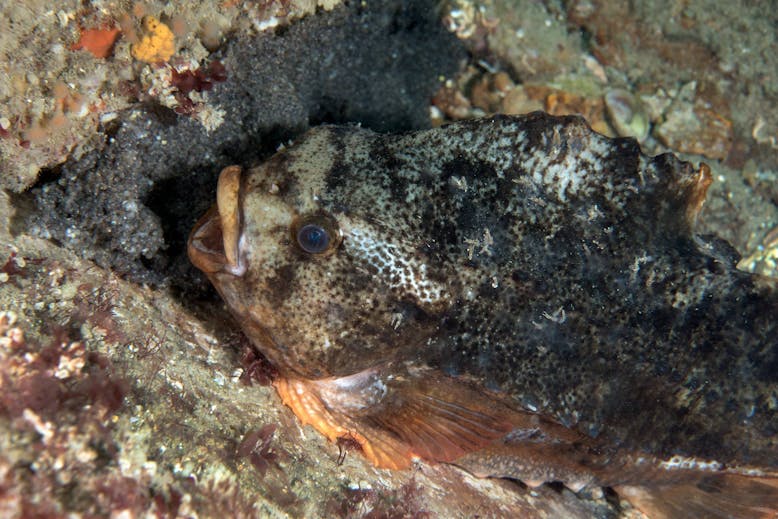Lumpsucker

The Lumpsucker visits the waters off Selsey for just a few months between Feb and early May. Anya Frampton tells the Lumpsuckers' story.

Coming from the depths to breed, the female mates and returns immediately to deeper water, so it is the male of the species that is most often spotted. He is, in fact, rather hard to miss with a rugby ball shaped body, large wide head, and rows of bony tubercles that look like warts. To top it all he keeps his mating colours which give him a subtle blue/grey top and not so subtle pinkish/orange underside. Adult males can weigh as much as 5kg and grow to be about be 55cms long. In summary: lumpy, rotund, and with colours to make him stand out!
He is an extremely devoted father who stays with his egg cluster from laying to hatching. The clusters consisting of anywhere between 15,000-150,000 individual, large round, cream, or pale-yellow eggs, which are moulded to fit the surface it is on, often a rock. He is not only guarding his babies but can be seen fanning with his fins and poking his head in to break up the mass, this most likely is helping to oxygenate the eggs.
His specially adapted pelvic fins are used to hold him in place as needed. The pelvic fins have fused to form a powerful sucker that he uses to attach to a rock and ride out the storms and rough weather. They can still be dislodged, which is when we find them washed up on the shore.
On hatching, the baby lumpsucker is only 6-7mm and resembles a tadpole. His job done, Dad returns to the preferred depth of between 50 and 300 metres. We are not sure how deep they can go but the deepest recorded came from 838 metres, these are true deep-sea adventurers.
If you have any questions about the Lumpsucker found off Selsey, then contact Anya Frampton, Selsey's resident SSI Marine Ecology Instructor at Mulberry Marine Experiences.